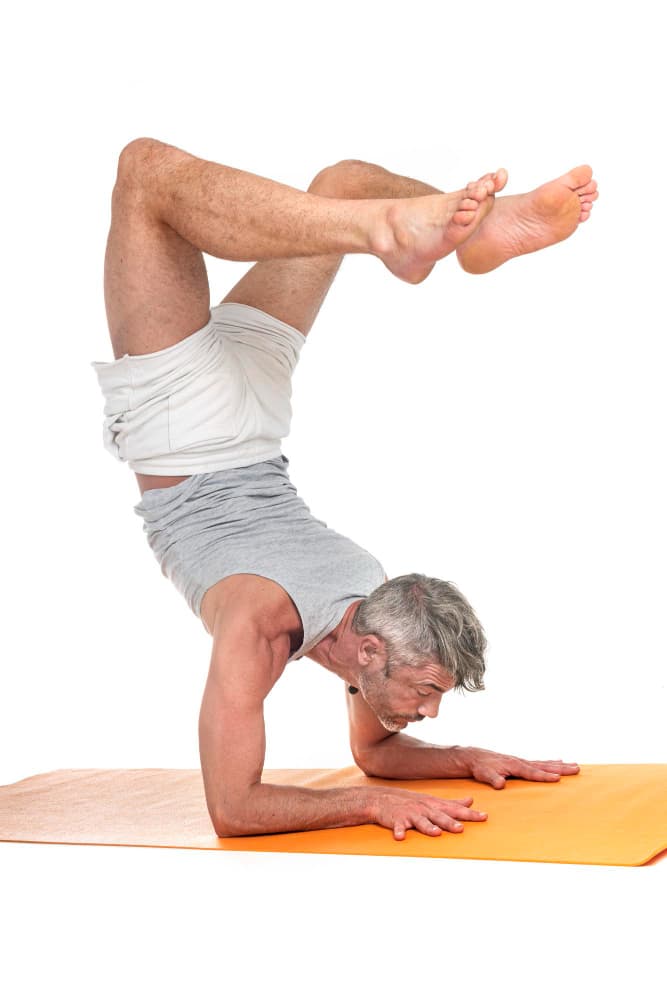Yoga and Mindfulness have become increasingly popular in recent years, not just as fitness trends but as holistic approaches to improving overall well-being. These practices, rooted in ancient traditions, offer myriad benefits for the body and mind. In this article, we’ll dive deep into what Yoga and Mindfulness are, their numerous benefits, how to start practicing them, and much more. Whether you’re a beginner or looking to deepen your practice, this guide will provide valuable insights and practical tips.
Table of Contents
What is Yoga?
Overview of Yoga
Yoga is an ancient practice that originated in India over 5,000 years ago. It combines physical postures, breathing exercises, and meditation to promote physical, mental, and spiritual health. The word “yoga” comes from the Sanskrit word “yuj,” which means to unite or join, symbolizing the union of body and mind.
History of Yoga
The history of yoga can be traced back to the Indus Valley civilization. Ancient texts such as the Vedas and the Upanishads mention yoga practices. Over centuries, yoga evolved through different phases, including the classical period marked by the writing of Patanjali’s Yoga Sutras, the post-classical period where hatha yoga emerged, and the modern period where yoga became popular worldwide.
Different Types of Yoga
Yoga has various styles, each with its own focus and benefits. Here are a few popular ones:
- Hatha Yoga: A gentle introduction to the most basic yoga postures.
- Vinyasa Yoga: Known for its fluid, movement-intensive practices.
- Ashtanga Yoga: A rigorous style following a specific sequence of postures.
- Bikram Yoga: Consists of 26 challenging poses practiced in a heated room.
- Iyengar Yoga: Emphasizes precise alignment and uses props like belts and blocks.
What is Mindfulness?
Definition of Mindfulness
Mindfulness is the practice of being present in the moment, aware of your thoughts, feelings, and sensations without judgment. It involves paying attention to the here and now rather than dwelling on the past or worrying about the future.
History and Origins of Mindfulness
Mindfulness has roots in Buddhist meditation practices, particularly Vipassana, or insight meditation. However, it has been adapted into a secular practice and widely popularized by figures like Jon Kabat-Zinn, who developed the Mindfulness-Based Stress Reduction (MBSR) program.
Differences between Yoga and Mindfulness
While yoga primarily focuses on physical postures and breathing exercises, mindfulness is about cultivating a state of awareness and presence. Both practices aim to improve mental clarity and reduce stress, but they do so through different approaches. Integrating both can provide a holistic approach to well-being.
Benefits of Yoga and Mindfulness
Physical Benefits
Improved Flexibility One of the most apparent benefits of practicing yoga is increased flexibility. Regular yoga sessions help stretch and lengthen muscles, making movements easier and reducing stiffness. This improvement in flexibility can also prevent injuries by enhancing your range of motion.
Enhanced Strength Yoga is not just about stretching; it also builds muscle strength. Many yoga poses, such as plank and downward dog, require you to support your own body weight, which can strengthen various muscle groups. Over time, this can lead to improved physical endurance and better overall muscle tone.
Better Posture With yoga’s focus on alignment and balance, practitioners often see an improvement in their posture. As you become more aware of your body and how it moves, you start to notice and correct poor posture habits. Good posture not only reduces the risk of back and neck pain but also boosts confidence.
Enhanced Respiratory Function Yoga emphasizes deep, mindful breathing, which can significantly improve lung capacity and function. Practices like pranayama (breathing exercises) teach you to breathe more efficiently, which can benefit both your physical performance and mental clarity.
Mental and Emotional Benefits
Stress Reduction One of yoga and mindfulness’s most significant mental benefits is stress reduction. Both practices encourage relaxation and the release of tension in the body. The combination of physical movement, deep breathing, and meditation can activate the parasympathetic nervous system, promoting a state of calm.
Anxiety and Depression Management Yoga and mindfulness have been shown to help manage symptoms of anxiety and depression. By focusing on the present moment and engaging in physical activity, individuals can break the cycle of negative thoughts and feelings. Regular practice can lead to a more positive outlook and better emotional health.
Enhanced Focus and Concentration Practicing mindfulness requires you to concentrate on your breath, body, or a specific point of focus. This training can improve your ability to concentrate in other areas of life as well. Yoga, with its precise movements and balanced poses, also demands focus, which can sharpen your mental acuity.
Emotional Stability Yoga and mindfulness teach you to observe your thoughts and emotions without judgment. This can lead to greater emotional stability and resilience. By recognizing and accepting your feelings, you can respond to life’s challenges with a calm and balanced mind.
Practicing Yoga and Mindfulness
Getting Started with Yoga
Choosing the Right Type of Yoga With various styles of yoga available, it’s essential to find one that suits your needs and fitness level. Beginners might start with Hatha or Vinyasa yoga, which provides a good foundation of basic poses. If you’re looking for a more vigorous workout, Ashtanga or Bikram yoga might be the way to go. It’s a good idea to try a few different classes to see which style resonates with you the most.
Basic Yoga Poses for Beginners Here are a few foundational poses that are great for beginners:
- Mountain Pose (Tadasana): A simple standing pose that improves posture and balance.
- Downward-Facing Dog (Adho Mukha Svanasana): Stretches the hamstrings, calves, and spine.
- Warrior I (Virabhadrasana I): Strengthens the legs and core while improving focus.
- Child’s Pose (Balasana): A resting pose that gently stretches the back and shoulders.
Practicing these poses regularly can help build a strong foundation for your yoga practice.
Setting Up a Yoga Routine Consistency is key when it comes to yoga. Aim to practice at least three times a week, even if it’s just for 15-20 minutes. Find a quiet space where you won’t be disturbed, and set a regular time for your practice. Using a yoga mat and comfortable clothing can also make your sessions more enjoyable.
Getting Started with Mindfulness
Techniques for Mindfulness Practice Mindfulness can be practiced in various ways, but the goal is always to stay present. Here are some techniques to try:
- Breathing Meditation: Focus on your breath, noticing the sensation of air entering and leaving your nostrils.
- Body Scan: Gradually shift your attention through different parts of your body, observing any sensations without judgment.
- Mindful Walking: As you walk, pay attention to your body’s movement and the feeling of your feet touching the ground.
These simple techniques can help you develop a regular mindfulness practice.
Guided Meditation For those new to mindfulness, guided meditation can be a helpful starting point. Apps like Headspace and Calm offer various guided sessions that can lead you through the process. Listening to a soothing voice can make it easier to stay focused and present.
Incorporating Mindfulness into Daily Life Mindfulness isn’t limited to formal meditation sessions. You can practice it throughout your day by being fully engaged in whatever you’re doing. Whether you’re eating, walking, or having a conversation, try to stay present and aware of the moment. This can transform mundane activities into opportunities for mindfulness.
Combining Yoga and Mindfulness
How Yoga and Mindfulness Complement Each Other
Synergy Between Yoga and Mindfulness Yoga and mindfulness go hand in hand, each enhancing the effects of the other. While yoga focuses on physical postures and breath control, mindfulness emphasizes being present and aware of each moment. Together, they create a holistic practice that benefits both the body and the mind. Yoga poses can be practiced with a mindful attitude, turning physical exercise into a meditative experience.
Integrating Mindfulness into Yoga Practice Mindfulness can deepen your yoga practice by helping you stay present during poses and sequences. Here’s how to integrate mindfulness into your yoga routine:
- Start with Intention: Begin each session by setting an intention. It could be as simple as staying present or being kind to yourself.
- Focus on Breath: Pay attention to your breath throughout your practice. Notice how it changes with different poses and movements.
- Observe Sensations: As you move through poses, observe the sensations in your body without judgment. This can help you understand your body better and avoid injuries.
- Stay Present: Try to keep your mind from wandering. If it does, gently bring your focus back to your breath and body.
By combining these elements, you can transform your yoga practice into a mindful experience that nurtures both your body and mind.
Case Studies and Research Findings Research has shown that combining yoga and mindfulness can profoundly affect mental and physical health. This combination can reduce stress, improve mood, and increase overall well-being. For instance, a study published in the National Center for Biotechnology Information highlights how yoga and mindfulness together can significantly reduce anxiety and depression.
Incorporating both practices into your routine can lead to lasting benefits, making it easier to handle the challenges of daily life with a calm and balanced mind.
Related Article: Master the Art of Yogamente with These Essential Yoga Poses
Challenges and Solutions
Common Challenges in Practicing Yoga and Mindfulness
Physical Limitations and Injuries One of the most common challenges in yoga is dealing with physical limitations or past injuries. Many worry their bodies aren’t flexible or strong enough to perform certain poses. Additionally, old injuries can make some movements painful or risky.
Maintaining Consistency Staying consistent with yoga and mindfulness practices can be tough, especially with a busy schedule. It’s easy to skip sessions when life gets hectic; before you know it, the habit has slipped away.
Mental Blocks and Distractions Mental blocks and distractions are another significant challenge. It can be hard to quiet the mind, especially if you’re dealing with stress or anxiety. Internal and external distractions can pull your focus away from your practice.
Solutions and Tips
Modifying Yoga Poses for Different Needs If you have physical limitations or injuries, it’s crucial to modify poses to suit your body. Using props like blocks, straps, and bolsters can help you maintain proper alignment without strain. For instance, you can use a strap to reach your feet in seated forward bends if you have tight hamstrings. Always listen to your body and avoid pushing yourself too hard.
Creating a Supportive Environment To maintain consistency, create a supportive environment for your practice. Set a regular schedule and stick to it as much as possible. Find a quiet, comfortable space where you won’t be interrupted. Informing your family or housemates about your practice time can also help minimize distractions.
Overcoming Mental Barriers Overcoming mental barriers requires patience and practice. Start with short sessions and gradually increase the duration as you become more comfortable. Techniques such as focusing on your breath, using a mantra, or guided meditations can help you stay present. Remember, it’s normal for the mind to wander; gently bring your focus back when it does.
Yoga and Mindfulness in Modern Life
Yoga and Mindfulness in the Workplace
Benefits for Employees Incorporating yoga and mindfulness into the workplace can offer numerous benefits. Employees who practice these techniques often report reduced stress levels and improved concentration. They can help manage workload pressures and foster a more positive work environment. Additionally, regular practice can lead to better physical health, reducing the number of sick days taken.
Implementing Yoga and Mindfulness Programs: Many companies are starting to recognize the benefits of yoga and are implementing programs to support employee well-being. This can include offering on-site yoga classes, mindfulness meditation sessions, or providing resources for remote employees to practice at home. Companies might also bring in experts for workshops or create quiet spaces where employees can meditate during breaks.
Success Stories Several organizations have successfully integrated yoga and mindfulness into their workplace culture. For example, some tech companies have on-site yoga studios and offer daily classes. Others have seen positive results from introducing mindfulness meditation apps to their employees. These initiatives have increased job satisfaction, productivity, and a more harmonious work environment.
Yoga and Mindfulness for Children
Benefits for Young Minds Children can also benefit greatly from yoga and mindfulness. These practices can help improve their concentration, reduce anxiety, and enhance emotional regulation. Yoga can be a fun way to stay active, while mindfulness exercises can teach kids to manage their emotions and develop a calm, focused mind.
Programs and Practices for Kids Many schools are now incorporating yoga and mindfulness into their curricula. Programs tailored for children often include playful poses, breathing exercises, and guided relaxation sessions. Parents can also introduce these practices at home through fun and engaging activities. For instance, a simple mindful breathing exercise or a short yoga session can be part of their daily routine.
Research Findings Research supports the benefits of yoga and mindfulness for children. Studies have shown that these practices can improve academic performance, reduce symptoms of ADHD, and promote better behavior in the classroom. A study published by the National Center for Biotechnology Information highlights how mindfulness can improve the quality of life for young students, making it a valuable tool in education.
As we can see, incorporating yoga and mindfulness into various aspects of modern life offers substantial benefits. Whether in the workplace or at school, these practices can improve well-being and foster a more balanced, healthy lifestyle.
Conclusion
Recap of Benefits and Practices Yoga and mindfulness are powerful practices that offer a wide range of benefits for both the body and mind. From improving flexibility, strength, and posture to reducing stress, anxiety, and depression, these practices can significantly enhance your overall well-being. The physical benefits of yoga are complemented by the mental clarity and emotional stability of mindfulness. Integrating these practices into your daily routine allows you to enjoy a healthier, more balanced lifestyle.
Encouragement to Start and Maintain Practice Starting a yoga and mindfulness practice might seem daunting, but the rewards are well worth the effort. Remember, you don’t need to be perfect or commit to long sessions immediately. Begin with small, manageable steps. Find a style of yoga that suits you, and incorporate mindfulness techniques into your daily activities. Consistency is more important than intensity. With time and practice, you’ll find that these habits become a natural part of your life, bringing peace and balance.
Related Article: Transform Your Life with the Many Benefits of Yogamente







